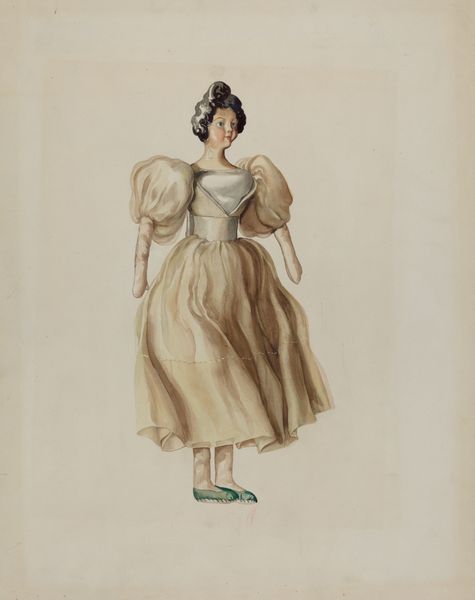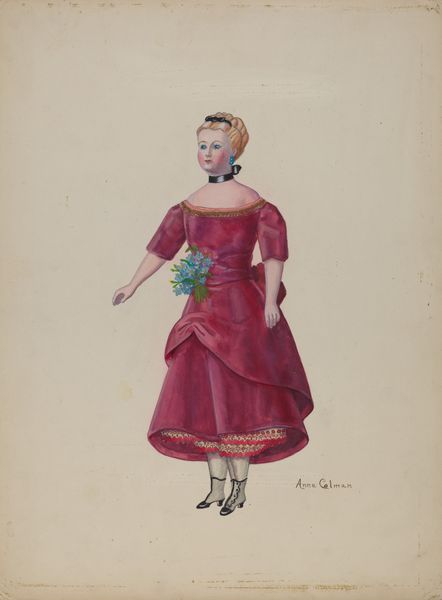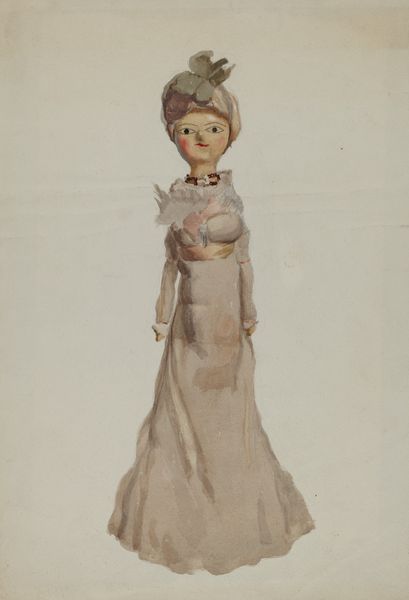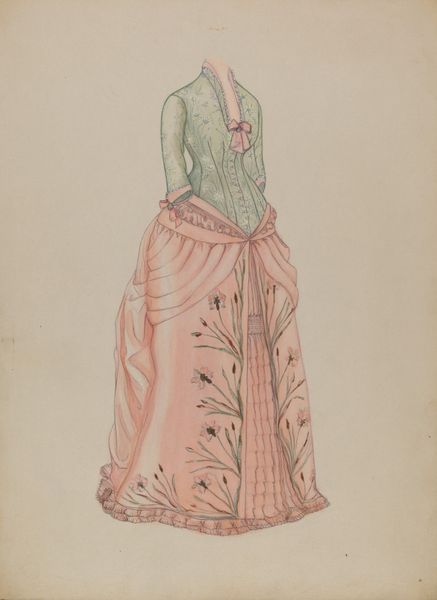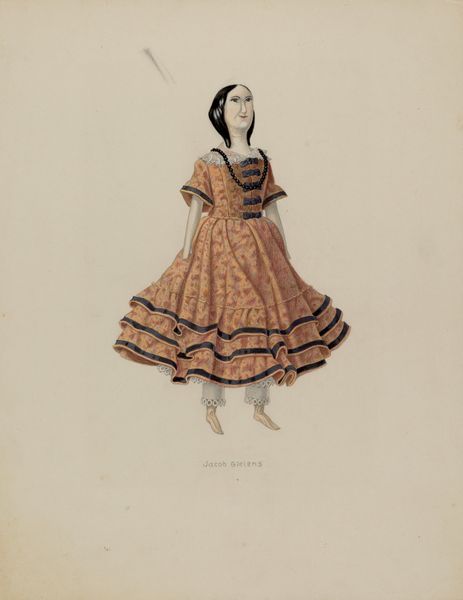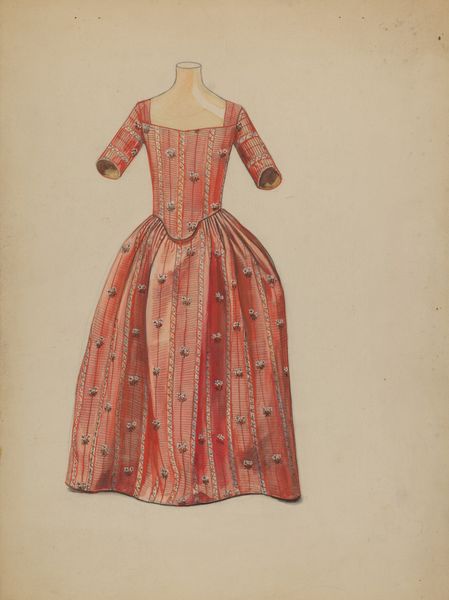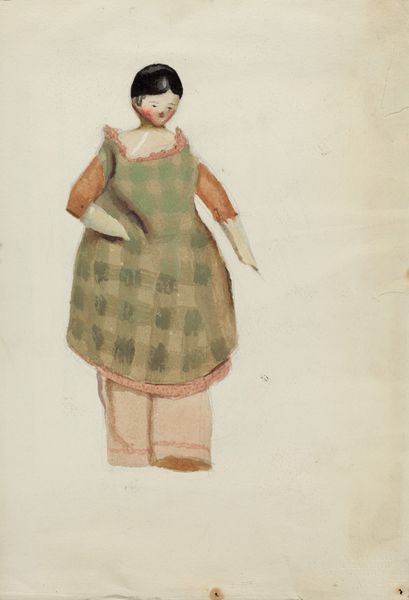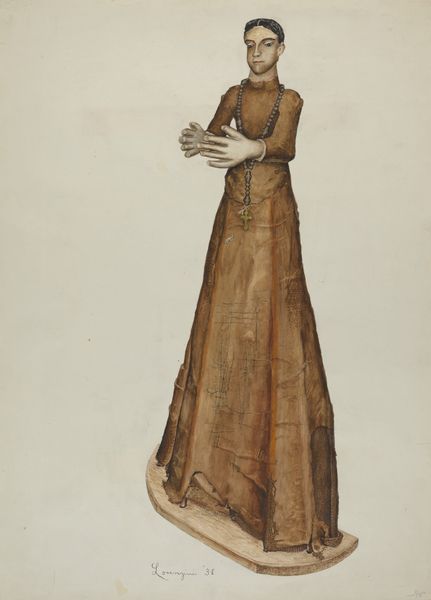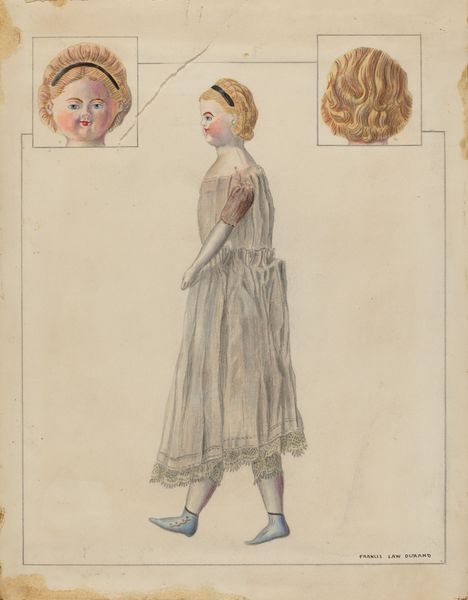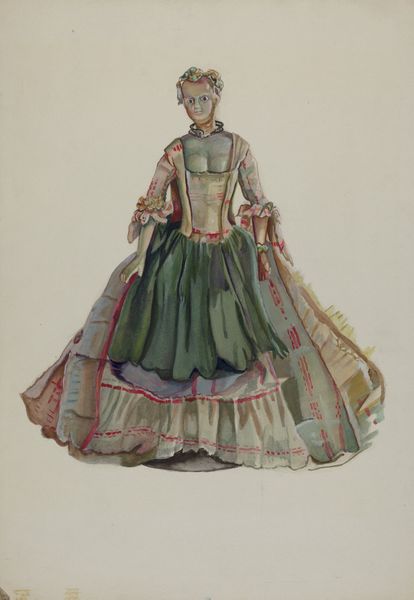
drawing, coloured-pencil, watercolor
#
drawing
#
coloured-pencil
#
watercolor
#
coloured pencil
#
watercolour illustration
#
miniature
Dimensions: overall: 35.4 x 27.9 cm (13 15/16 x 11 in.) Original IAD Object: 10" long
Copyright: National Gallery of Art: CC0 1.0
Curator: This watercolor and coloured pencil drawing by Jane Iverson, created around 1936, is simply titled "Doll." Editor: There's something inherently melancholic about these dolls. Like echoes of childhood, innocent yet slightly eerie. They almost feel like ghosts in miniature, capturing a moment in time that's slipped away. Curator: The arrangement is striking. Iverson places three dolls, labeled A, B, and C, against a neutral backdrop. It emphasizes the form of each figure—note how line and color are expertly used to create depth and texture in their dresses. The attention to detail transforms humble subjects into objects of aesthetic contemplation. Editor: Absolutely. Look at the doll in the middle; there's a regal, almost theatrical quality to her. And then the dress… that fabric’s rendered so beautifully you can almost feel its texture, hear its rustle. But I’m also wondering, were they her dolls? Does this represent some longing or memory from Iverson’s past? The asymmetry adds to that bittersweet feeling. Curator: A personal interpretation is understandable, although it moves away from the work's formal strengths. Semiotically, one might suggest that the varying states of completion, most noticeably the missing arm on "C", disrupt notions of wholeness and idealized beauty typical of conventional doll portraiture. The artwork’s beauty lies in its surface realism—not in speculation. Editor: That’s interesting, because to me the imperfections *are* the beauty. Those small distortions and that unfinished quality invite narrative. Maybe that's why it resonates… It’s not a perfect depiction; it's got heart and a bit of the haphazardness of real life, you know? It hints at stories. Curator: Yes, it's an opportunity to delve deeper into structure and form, the fundamental elements that truly communicate artistic intent. Editor: Ultimately, though, it is a poignant reminder that the objects we surround ourselves with become infused with memory and emotion.
Comments
No comments
Be the first to comment and join the conversation on the ultimate creative platform.
